10 Charts That Capture How the World Is Changing
From LLMs to Electric Vehicles, Church Attendance to AI Game Developers
Weekly writing about how technology and people intersect. By day, I’m building Daybreak to partner with early-stage founders. By night, I’m writing Digital Native about market trends and startup opportunities.
If you haven’t subscribed, join 60,000 weekly readers by subscribing here:
10 Charts That Capture How the World Is Changing
So far, I’ve written four editions of “10 Charts That Capture How the World Is Changing”—
This is a roughly quarterly cadence, but I’m a bit overdue for a new edition. So here we go.
I’ve always been a visual learner, and charts help me process information. They’re also an efficient way to encapsulate how the world is changing. This week’s charts cover a broad range of topics, from LLMs to electric vehicles, church attendance to game development.
AI Surpasses Humans
SHEIN and Fashion Sustainability
K-Factors
Health Expenditures & Doctor Wait Times
Church Attendance
Die With Zero
Dopamine Culture
EV Sales
Gaming, Meet AI
Roblox Developers & Self-Employment
My hope is that this is an engaging way to visualize a variety of important trends.
Let’s jump in 📈
1️⃣ AI Surpasses Humans
I shared a version of this chart in last fall’s LLMs for Dummies, which dug into the inner-workings of large language models. LLMs have improved rapidly in recent years. If air travel had improved at the same rate as LLMs, average flight speed would have improved from 600mph in 2018 to 900,000mph in 2020—a 1,500x increase in two years (!). Instead of taking eight hours to travel from London to New York, it would take just 19 seconds. (This is based on the number of parameters in GPT-1 vs. GPT-3. GPT-3 has 175 billion parameters, and GPT-4 is rumored to have many, many more.)
Moore’s Law told us that technology should double every two years. Over the past 10 years, though, we’ve advanced AI by about a million times. The result: AI can now do many things better than humans can—image recognition, reading comprehension, language understanding, and so on.
Technology has always amplified human ability, but it could rarely do “human-like” things better than we can. That’s changed. In about 10 seconds, ChatGPT can write a coherent essay on how the Roman Empire influenced modern society. No human can do that.
Last fall’s The Mobile Revolution vs. The AI Revolution argued that we’re moving from the calculator era to the brain era. From that piece:
“Back when computers were being created, there was a debate among experts—should the computer be designed to mimic a calculator, or to mimic the human brain? The calculator group won out (particularly because of technology’s limits) and the computer was born as we know it: literal, pragmatic, analytical. Computers are very good at….well, computation. They’re less good at nuance, reasoning, creativity.”
Now, machines are actually quite good at these things. Machines have been good at math for a while. Now they can write and draw and paint and sing.
The natural startup opportunities here are AI agents that can execute tasks. If the first version of software brought the offline online—instead of paying invoices over the phone, do it on this elegant dashboard!—the next version simply…does the work for you. Invoice = paid ✅
Call the AI tools what you want—agents, co-pilots—but they’ll likely be specialized by vertical (e.g., construction) and function (e.g., accounting), and they’ll further amplify human ability.
2️⃣ SHEIN & Fashion Sustainability
One of the contradictions we talk about often in Digital Native: Gen Z’s simultaneous love for the environment and penchant for fast fashion. People do like to buy sustainably—but not quite as much as they like a good deal.
SHEIN has gobbled up US fast fashion. When the company entered the US market in 2018, its sales hovered around $1.5B. Sales have since multiplied 15-20x and now top giants like Zara and H&M. The company’s revenue target for 2025 is over $50B.
SHEIN’s trajectory has been stunning: the business grew over 100% for eight straight years (!), and in 2022 dethroned Amazon as the No. 1 shopping app in the iOS and Android app stores.
The manufacturing velocity is also something to behold: 8,000 new items are added to SHEIN every day, while Zara adds 500 every week. SHEIN is basically an internet-native reincarnation of old-school fast fashion, leveraging better technology to squeeze three week design-to-production timelines into three days. SHEIN combs competitor’s websites and Google Trends to figure out what’s in style, then creates designs quickly, forecasts demand, and adjusts inventory in real-time.
While SHEIN’s growth is jaw-dropping, so is its footprint. My friend Kyla shared a few stats on SHEIN recently from a new HBR report:
SHEIN clothes are 65% polyester (double the % for Zara & H&M!)
Polyester is responsible for ~35% of the microplastics in the ocean
SHEIN ships between 2-3B items a year
Company emissions grew 52% last year
SHEIN has 10x’ed their lobbying spend in the past year
What’s the startup opportunity to fix this? In my mind, it’s a way to power the circular economy for fashion. If people are going to buy cheap products—and they always will—then we need a platform for frictionless reselling. This was the thesis behind last fall’s The Resale Revolution.
Resale is the fastest-growing category of apparel. In this chart, resale is the green category at the top; the only other category even close to resale’s growth is off-price retail (people love TJ Maxx!).
By 2030, the secondhand fashion industry will be nearly twice the size of the fast fashion industry. The irony here is that the latter is powering the former. SHEIN isn’t going anywhere; Temu isn’t going anywhere. We’re all gonna keep buying more stuff, so we just need better ways to offload and recirculate that stuff.
3️⃣ K-Factors
Customer acquisition today is a bit of a contradiction.
On the one hand, it’s never been harder to grow. Apple’s App Tracking Transparency changes have decimated acquisition, leading to ballooning CACs and deteriorating measurement; ATT lopped $10B off Meta’s business alone. There’s an entire generation of paid marketing-heavy startups from the 2010s—think: DTC brands and consumer subscription apps—that simply wouldn’t work today.
On the other hand, it’s never been easier to go viral. TikTok popularized an algorithmic feed that untethers content from a follower graph. The For You Page is egalitarian: if your content is good enough, you can blow up overnight. A video that takes 10 minutes to create might garner you a million impressions. Virality is there for the taking, but it takes a savvy marketer to seize it.
I’ve been thinking a lot about k-factors recently. The k-factor tracks the number of new users that each user brings. When the k-factor is greater than 1, the product grows virally. You can see in this chart that small changes in k-factor lead to massive differences in growth. 1.1 and you’re golden; 0.9 and you’re dead.
There are also huge difference between 1.1 and 1.2, 1.2 and 1.3, and so on. Take a look:
A 20% change in k-factor leads to 6.8x more users after 10 time periods. That’s the power of compounding.
How can you create and maintain virality? For many startups, a referral motion makes sense here. Incentivize your customers to bring other customers with a cash bonus, a reduced price, or a premium feature—people like free stuff. In a tough CAC environment, and with Big Tech bigger than ever with built-in distribution, k-factor becomes paramount. Every company should be maximizing k-factor.
4️⃣ Health Expenditures & Doctor Wait Times
The impact of human innovation on quality of life is stunning: until 1870, human life expectancy was under 30 years; now, experts believe that today’s 5-year-olds will live to 100.
Two weeks ago, we covered the concept of longevity escape velocity—the idea that by 2030, science will be progress enough each year that it extends our lifespans by more than a year; in other words, we get back time every year. And people are happy about this—a plurality of people want to live forever:
But the bad news for Americans comes in another chart:
Yikes.
The US spends about $13,000 per person per year on healthcare. That’s about double countries like the UK ($5,500) and Canada ($6,300). Among developed countries, Switzerland is next worst and sits at $8,000, a full UK below the US.
A related chart, in my mind, tracks physician appointment wait times. Spoiler alert: they’re not great.
And wait times are ticking up, increasing by a few days over the past couple years. So what do we do? Telehealth offers promise. There are many, many startups improving access to care through technology. Link up with your primary care physician, your therapist, your dermatologist. Change won’t come from the lethargic bureaucracy of government, so enterprising startups will need to help alleviate the pain from the two charts above.
5️⃣ Church Attendance
It’s Easter Weekend, which means that it’s the time of year when I’m shocked to find out how many of my friends Christian. Well, I’d argue most aren’t Christian, and that Easter is more about family tradition. Most of them certainly don’t attend church. Pew Research data shows that about a third of Millennials and a third of Gen Zs are atheists; in urban places like New York, it’s significantly higher. And overall, the share of US adults who don’t go to church is now about 50%:
Vermont (75%), New Hampshire (66%) and Maine (66%) are the least religious states. Mississippi (32%), Alabama (36%) and Louisiana (37%) are the most religious.
From Gallup surveys:
What interests me about the decline in church attendance is how it relates to the decline in community, which has exacerbated our loneliness epidemic. It’s not that we need churches, per se; it’s that we need places for gathering and socialization. Alongside the decline in church attendance, the number of community arts and recreation centers declined by 18% from 2008 to 2015. The rise of the internet and social media has also coincided with a decline in hanging out with friends.
What are the opportunities here? In many ways, online “communities” like Discord or Roblox or Reddit (newly public with a $9B market cap) are replacements for offline third spaces. We see some offline “third spaces” like social clubs (The Wing, Soho House) or health clubs (Equinox), but they’re few and far between. What’s happening is the migration of community from offline to online.
6️⃣ Die With Zero
One of the more fascinating recent philosophies: Die With Zero.
Die With Zero, popular among Gen Zs, promotes the idea that once you’ve saved enough to fund your retirement, you should focus on having memorable life experiences. Why die with a bunch of money? Net fulfillment over net worth. Bill Perkins’s book Die With Zero came out during the pandemic and has fueled the new worldview. This line of thinking is especially predominant among young consumers, and we see the effects in the rise of payment forms like BNPL and in increasing credit card debt.
That said, consumers are better off than ever. We have more to spend. Forerunner put out a good consumer report last week, and noted that today’s median consumer has +50% in disposable dollars compared to 2000’s median consumer (adjusted for inflation). Not bad. We’re all getting wealthier.
Aside from a pandemic blip, spend has been steadily increasing—we’re up +40% since the Great Recession.
I don’t see this growth stalling any time soon. Culturally, it’s becoming more encouraged to spend freely and lavishly on the things that make you happy. “Die With Zero” is a cousin of the “Treat Yourself” Gen Z cultural movement, and relates to the nihilism coursing through younger generations.
7️⃣ The Rise of Dopamine Culture
Okay, so this one isn’t a chart—but it’s a visual that’s stuck with me. It’s from Ted Gioia’s State of the Culture, and it shows how basically everything in life is now gamified, optimized for dopamine hits. Life is one big mash-up of clicks and scrolls and swipes.
Pretty dystopian.
In some ways, you could argue we’re seeing a pullback from this culture. Young people are more frequently turning to “dumb phones”—old-school Razrs etc. that aren’t internet-enabled. (The subreddit r/dumbphones now has 47K members.) But there’s also no denying that we’re only becoming more addicted to technology over time. A study from Microsoft found that since the year 2000, the average human attention span has decreased from 12 seconds to 8 seconds—a 33% drop. This means that humans now have shorter attention spans than goldfish. Yikes.
In case you forgot, we were talking about our shortening attention spans. This shortening is the result of having constant, unfettered access to the world’s information, content, and communications. The average American touches their phone 2,617 per day and unlocks it 150 times.
Every tactic in the right far column increases ARPU (average revenue per user) in tandem with increasing dopamine. As a result, the dopamine hits are going to continue. Old-school business practices have long preyed on human nature; the difference is that online, we can do so with more precision and consequence.
8️⃣ Electric Vehicle Sales
EVs are taking off. Units sold are up 5x in three years.
The rise of the EV is inevitable—it’s been a long time in the making, with recent tailwinds convalescing to accelerate adoption. Consumers continue to be concerned about climate change; battery technology has advanced enough that EVs can travel further on a single charge; EVs are coming down in price, becoming more affordable to more people. And so on. Most major car manufacturers are full steam ahead on electric.
How do startups bend the curve? One area that’s interesting to me: the market for used EVs. EVs are a different animal to buy and sell than regular internal combustion engine (ICE) vehicles. EVs are powered by software; when buying a used EV, battery health matters more than the odometer. This requires a different type of marketplace.
Startups like Plug in the US and Cardino in Europe operate marketplaces for used EVs. They offer liquidity for a fast-growing market that badly needs it.
9️⃣ Gaming, Meet AI
Gaming is a $250B market projected to swell to $680B by 2030—about a 14% compound annual growth rate. And the entire sector is about to be reinvented by AI.
Unity put out a good report on the State of Gaming. One chart covered how game studios are using AI right now. The most common use case is for non-player characters (NPCs). Companies like InWorld.ai are powering AI NPCs, and we’re only at the tip of the iceberg. Realistic generative characters will become table-stakes. But beyond NPCs, AI use in gaming is becoming quite wide-ranging:
Studios also use AI on the creation side—namely for character animations, code, and artwork generation:
Most modern PC or console games take from three to five years to make. Mobile games average a few months. How do those timeframes get compressed with new tooling?
Games will get more complex, intricate, interactive. Users will be able to quickly generate new scenes and storylines. What if in the horse-racing game above, I want to change the setting to a forest, not a field? Or make it nighttime, or ride a unicorn instead? Variations of the game won’t need to be pre-built or thought of; they can be real-time and malleable.
A new generation of game developer tools will power this future, and new user-generated platforms will emerge for AI-native gameplay.
🔟 Roblox Developer Payouts & Self-Employment
Speaking of user-generated games—Roblox has quietly grown its developer payouts year in and year out. Last year, the company paid out $740M to its army of five million creators. Impressive.
Roblox developers need to know Luau, though, and barriers to creation remain high. How does AI open the aperture for more creator platforms with more accessible tooling?
The rise of the Roblox developer also mirrors the rise of self-employment, a frequent topic on Digital Native. Since 2000, total workers have grown 15%; self-employed workers, meanwhile, have grown 50%. Working for yourself is the defining trend of modern work, and many such workers find themselves operating on top of a large internet platform. I expect this trend will continue, as more creative ways to earn a living emerge. And this should continue, offsetting AI-related job loss: if AI can recognize images and comprehend reading better than us, what new jobs will emerge that aren’t at risk of automation?
Final Thoughts
I’ll do another “10 Charts” series this summer. In the meantime, I’d love to see any charts that you’ve been struck by. You can reply to this email, or send me a DM on Twitter at @Rex_Woodbury.
Until next week 👋

Related Digital Native Pieces: Past Installments of 10 Charts
10 Charts That Capture How the World Is Changing (October 2023)
10 Charts That Capture How the World Is Changing (July 2023)
10 Charts That Capture How the World Is Changing (March 2023)
10 Charts That Capture How the World Is Changing (November 2022)
Thanks for reading! Subscribe here to receive Digital Native in your inbox each week:





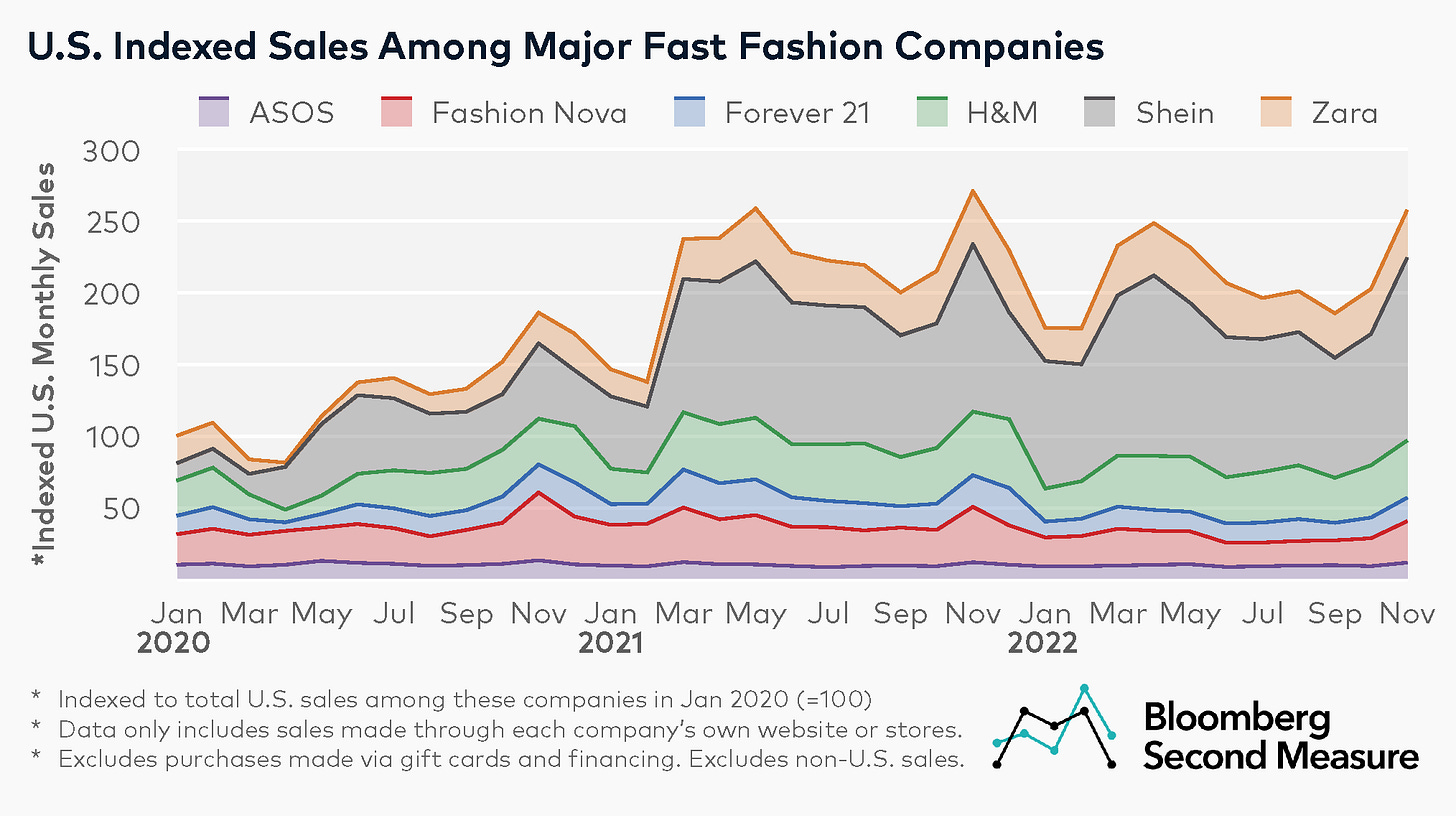

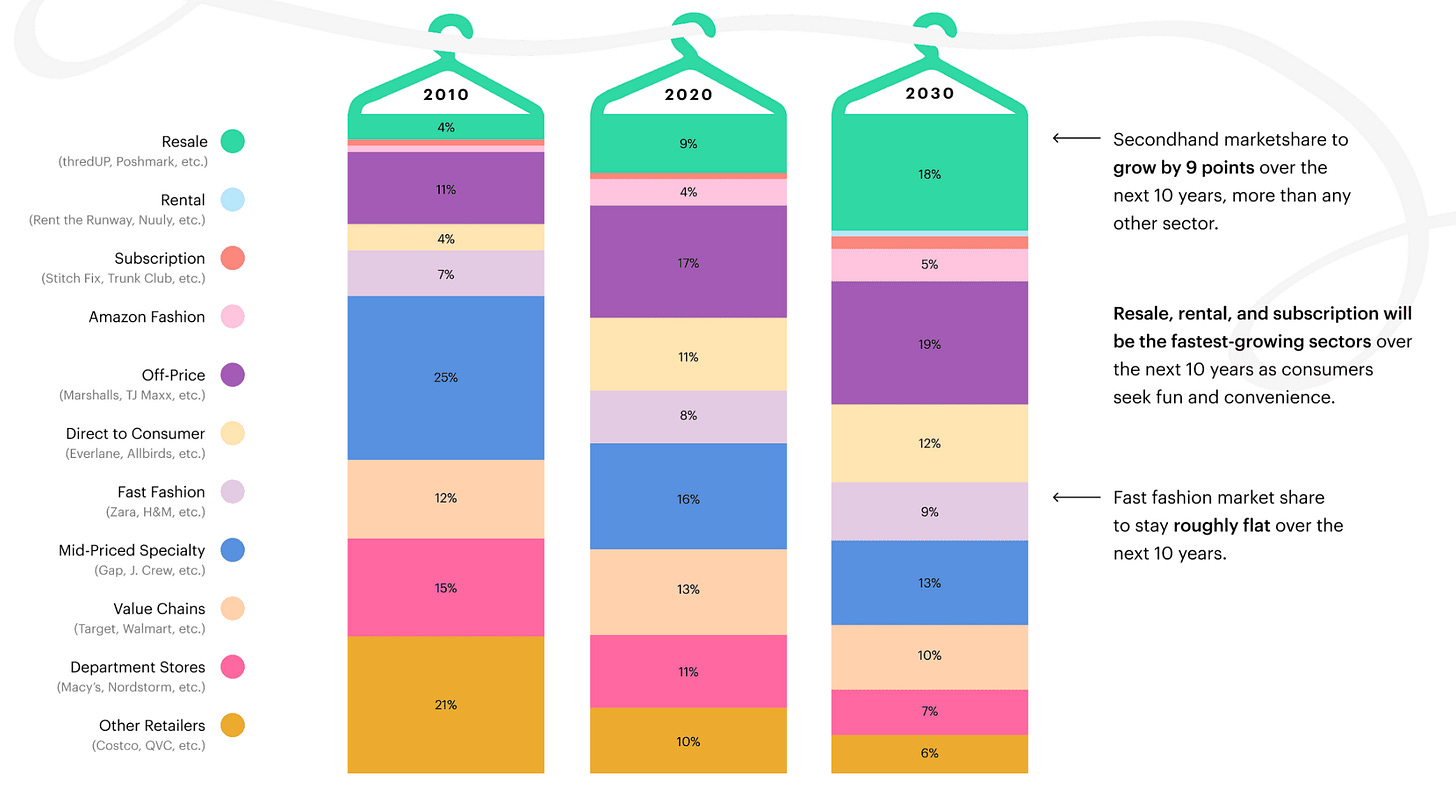

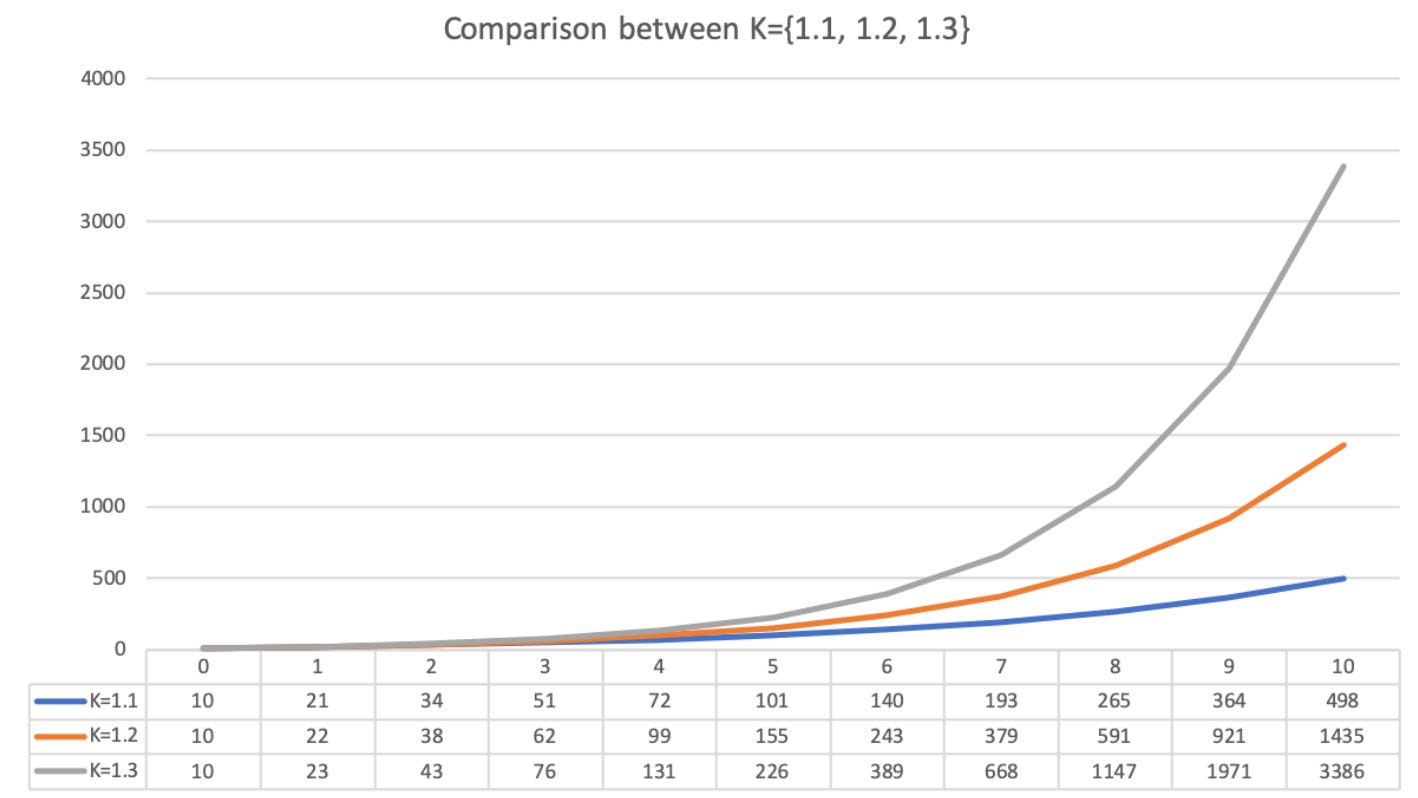

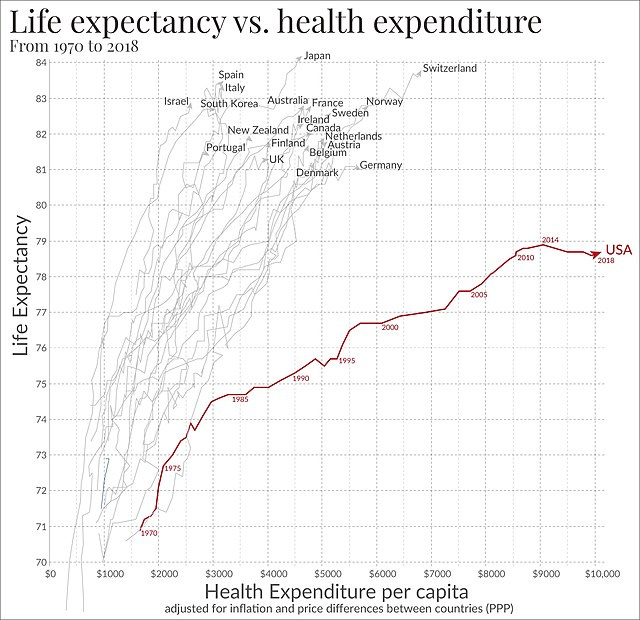



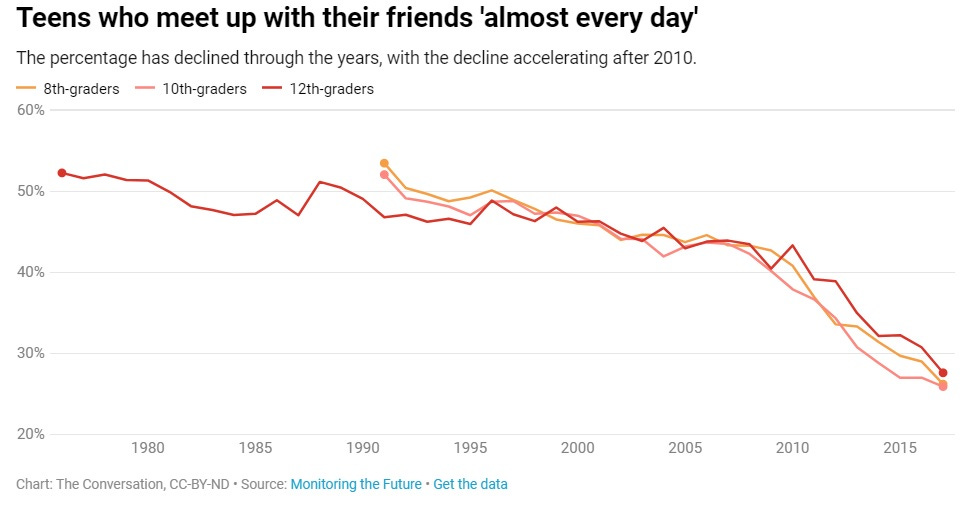



![r/dataisbeautiful - [OC] EV sales have accelerated globally, growing 5x in 3 years r/dataisbeautiful - [OC] EV sales have accelerated globally, growing 5x in 3 years](https://substackcdn.com/image/fetch/$s_!VnGz!,w_1456,c_limit,f_auto,q_auto:good,fl_progressive:steep/https%3A%2F%2Fsubstack-post-media.s3.amazonaws.com%2Fpublic%2Fimages%2Fa15be9e6-70b5-4112-8ef4-94a5ace58ed1_640x640.jpeg)




